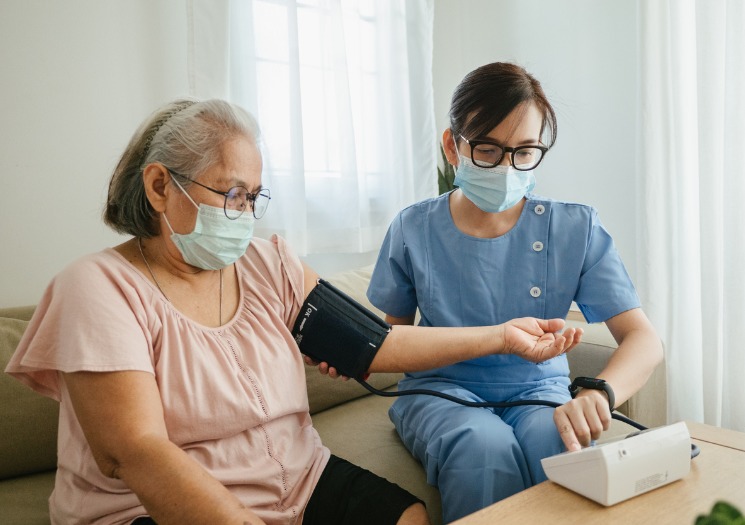- Find a Provider
-
Services
-
Redeemer Health provides compassionate care across every stage of life.
- View all Services
-
- Patients & Visitors
- Locations
- Careers
Redeemer Health Gets Green Light to Treat Hospital Patients in Their Own Homes
December 1, 2022
categories:

MEADOWBROOK, Pa. – November 2022 – Redeemer Health launched the first Hospital at Home program in the Philadelphia region this year. The program puts care providers in patients’ homes, delivering hospital-level acute care for patients with diagnoses such as pneumonia, urinary tract infection, cellulitis, dehydration, congestive heart failure, COPD and more. The Centers for Medicare & Medicaid Services (CMS) has approved 114 health systems to operate Hospital at Home programs so far, with five other systems approved in Pennsylvania.
“This is the future,” said Mary Ellen Cockerham, DNP, RN, senior director for Acute Care in the Home, who is heading the program’s launch. “This type of care can be done in the home safely, and it’s better for patients.” A national study of the Hospital at Home model found it to result in better clinical outcomes, higher patient and family satisfaction, fewer complications often associated with hospital stays, and less expense, she said.
The Hospital at Home program was recently granted $100,000 to purchase necessary in-home patient monitoring equipment and to outfit a command center at Holy Redeemer Hospital.
Patients enter the program from either Holy Redeemer Hospital’s emergency department or an inpatient unit, Cockerham explained. A physician provides ongoing assessment and treatment through a combination of in-home and virtual visits, along with a dedicated team of experienced RNs and health navigators. The program includes multiple daily visits, 24/7 access to on-call providers, transportation to and from Holy Redeemer Hospital, delivery of medication, equipment and three meals a day; and support from social workers, pastoral care, physical therapists and others.
To qualify, patients must meet criteria including safety of their home environment, family support and proximity to the hospital. Redeemer Health’s Hospital at Home program can accommodate traditional Medicare and Aetna Medicare patients. Additional coverage plans could be added soon.
Patients wear a “biovitals” patch that communicates their vitals and other information to a user-friendly electronic tablet they keep with them. The information is then sent to a command center at the hospital. Cockerham emphasizes that patients don’t need to be tech savvy to use the equipment, and internet access isn’t necessary. “The equipment is very easy to use, even for those who are not comfortable with computer equipment,” she explained. “For example, one touch on the tablet screen can request a nurse call, visit, or telehealth appointment.”
She notes that while Hospital at Home is new to the Philadelphia region, the concept is well-established. “The pandemic certainly was a catalyst for Hospital at Home,” she says. “But the concept has been around since the 1970s. Other countries are using it with success.” American health systems that have adopted the model include Duke Health, Cleveland Clinic, Mount Sinai Health System, Brigham and Women’s Hospital, Massachusetts General Hospital, the Mayo Clinic, and Geisinger Medical Center in central Pennsylvania.



